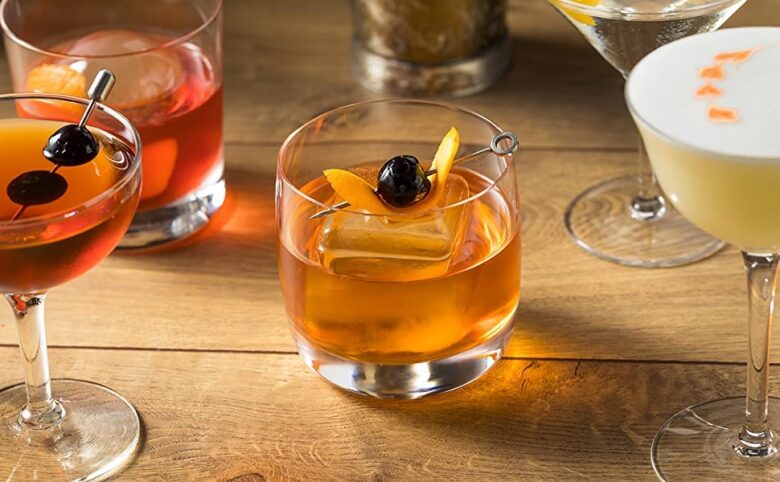When I was little and we would go out to eat (which wasn’t often) and my parents were in a celebrating mood, they would order a cocktail. And sometimes when they were getting a drink, I was lucky enough to get a Shirly Temple ‘cocktail’ to sip along with them. I loved that combination of sweet cherry and 7UP. And best of all was finishing and still having that bright red cherry to eat at the end. It was – to me – just like the olive in my dad’s martini. As an adult, they now disgust me, and I have been known to go on and on about the fact that the red abominations are really cherry Frankensteins. To me, the only cherry that should be part of a cocktail with high quality ingredients is the Luxardo cherry (or a brandied cherry). I believe that a cocktail is only as good as its weakest ingredient, and that, for the most part, extends to the garnish as well.
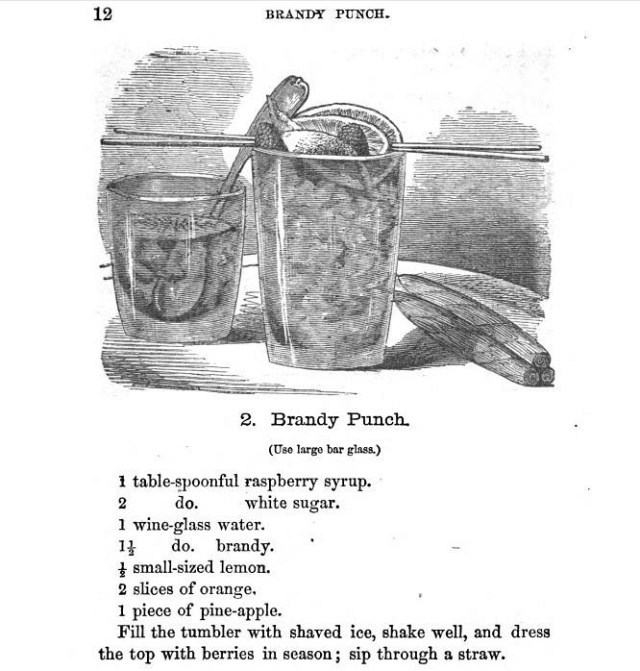
The cocktail garnish dates to the mid-1800s when cocktails were experiencing an explosive evolution. Bartenders were making a name for themselves with drinks that used unique ingredients and were presented with extravagant garnishes. Punch, the group drink served in a large common bowl, had been around for centuries and often included slices of lemons, limes and/or oranges, as well as flowers floating on the surface. As the large bowl transitioned into the single-serving glass, the garnishes followed. Illustrations of cocktails and mixed drinks from that era show a veritable fruit salad on top. This was great if you lived on the coast, and the fruit was in season. But for many places, and much of the year, fresh fruit was simply unavailable. Bartenders turned to pickled and macerated fruit to liven up their presentation.
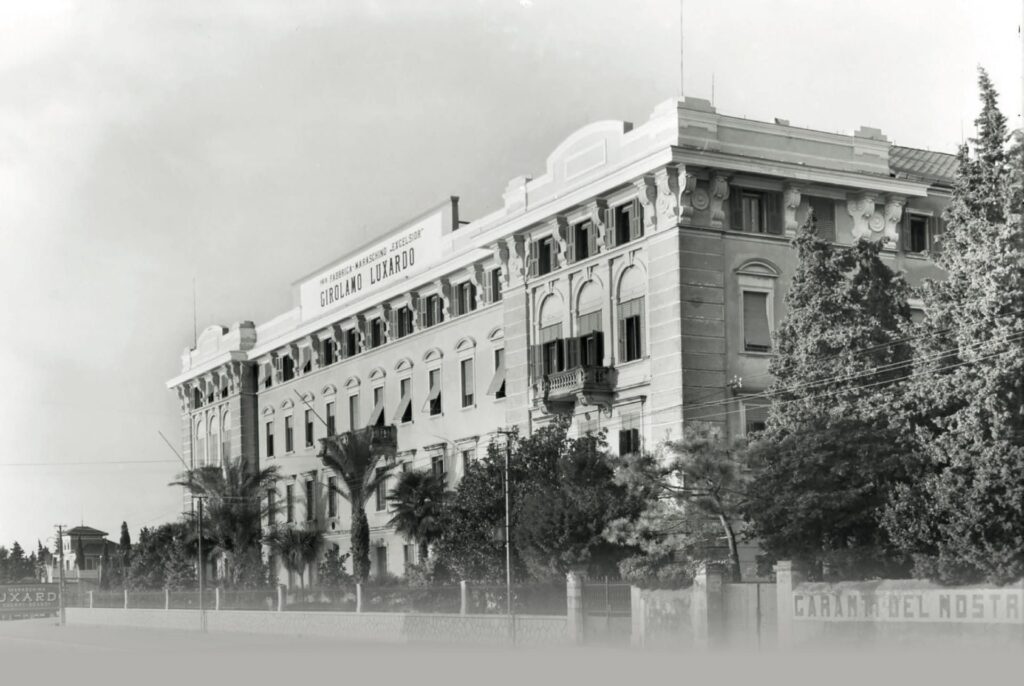
The Luxardo distillation company began producing Maraschino liqueur, in what is now Croatia, beginning in 1812. The liqueur was/is created with Marasca cherries (hence the name) by Girolamo Luxardo, and the company is still fully controlled by the family. The sour, dense, and dark fruit was placed in vats with a neutral spirit for two years to make the cherry liqueur. Eventually that lead to the company producing cherries for sale, packed in a sweet spirit-based syrup, for use in a number of foods and drink. These made their way to America and into many of the new cocktails, like the Manhattan.
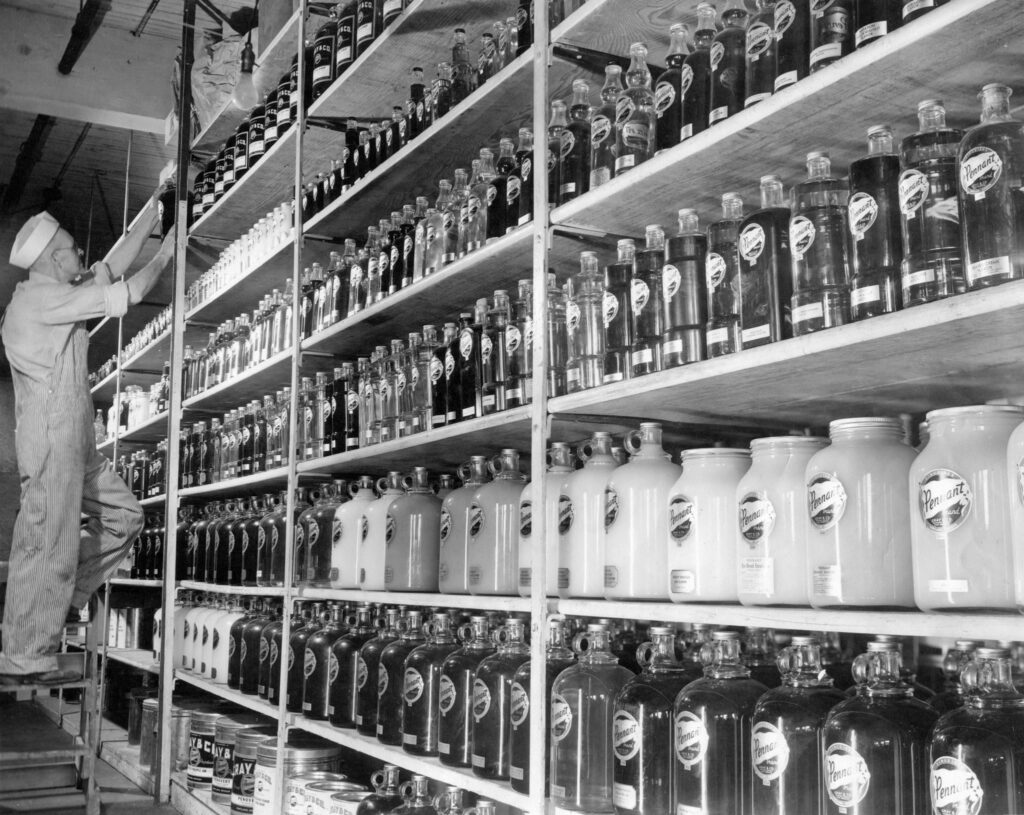
On the other hand, the bright red cherry you get on a tropical drink, an ice cream Sunday, or at the local tavern were, quite literally, created in a laboratory. American ‘maraschino cherries’ are typically made from Royal Ann, Rainier, or Gold cherries, common in the Pacific Northwest. Once Prohibition in America became law, the Luxardo cherries (and other similar products) were banned because of the presence of alcohol in the syrup, used as a preservative. As Amy Stewart tells us in her book The Drunken Botanist, “America’s temperance movement, working with soda manufacturers, campaigned against the evils of European cherries soaked in liquor.” Enter Ernest H. Wiegand, a Horticultural professor at Oregon State University. Now if you love those bright red and sweet orbs that sit looking pretty on a banana split, you may want to skip the next paragraph.
Even before Prohibition made the import of European cherries problematic, Wiegand and his team were working on preservation techniques for fruit. They developed a brining process that bleached the fruit using sulfur dioxide. This turned the cherries (and stems) white and resulted in a mushy product. So, calcium carbonate was added to firm up the fruit, coal tar was used to create the bright red color, and benzaldehyde was added for flavor. Yummy! (It never occurred to me to question why the stems were the exact same color red as the fruit. Try to unsee that from now on). This was great news for the US cherry grower but resulted in a red orb that was (and is) nothing more than a big, soft, artificially flavored cherry Skittle.
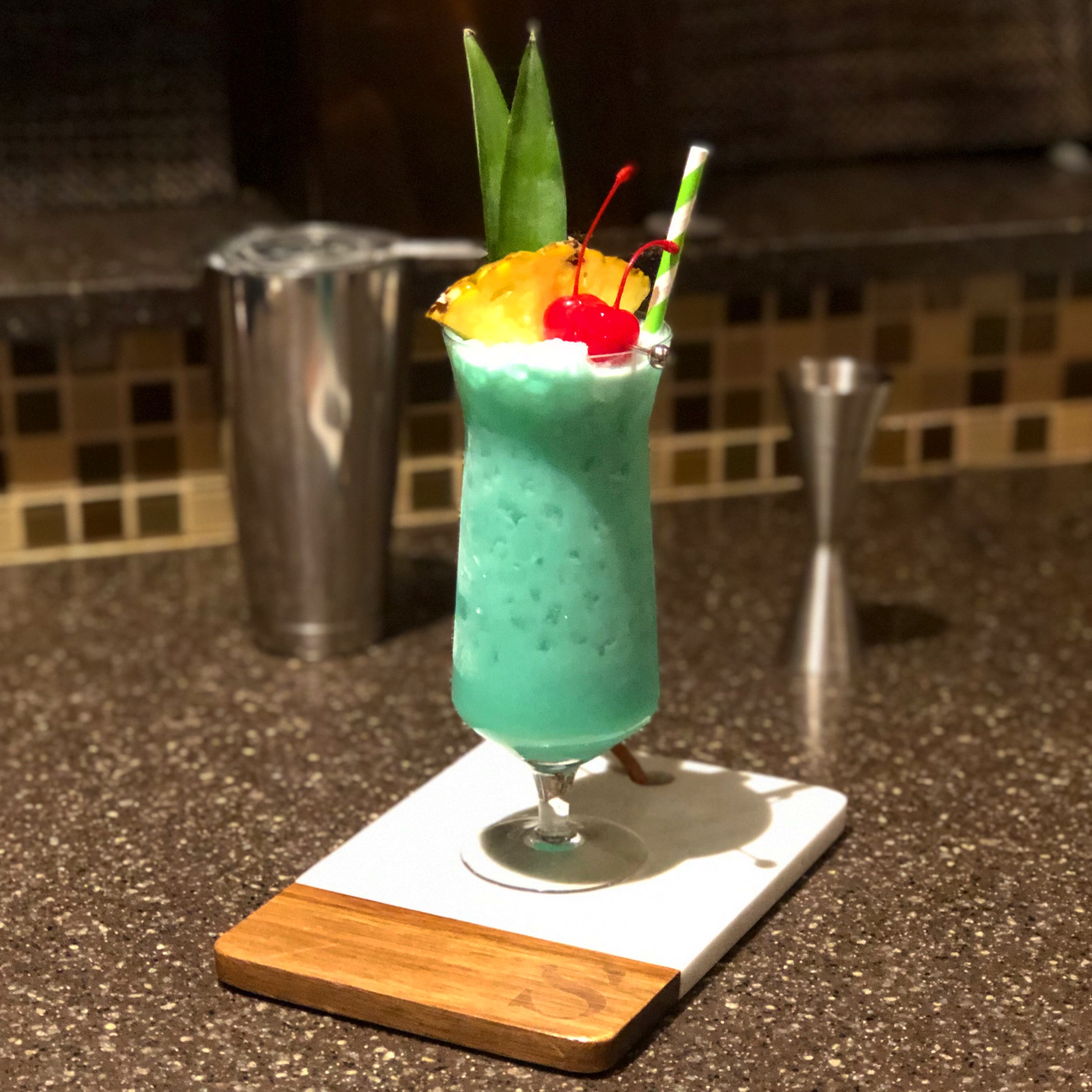
That’s not to say they are without some redeeming value. Some cocktails really benefit from that almost unnatural red pop of color. Some Tiki and Tropical drinks would not look quite the same with a deep burgundy cherry next to the paper umbrellas (not that I am making fun – Tiki cocktails can be some of the most complex and beautiful things I have ever sipped). In fact, in a pinch I purchased a $1.99 plastic bottle (that seems somehow appropriate) of the red guys for a tiki cocktail I was making (the Blue Hawaiian above). But there is a long tradition of drinking a Tiki and leaving the garnish behind, untouched. The drink and the presentation were amazing. Why ruin it by eating the cherry.
I am asked all the time, “Are they worth it”? A typical jar of American maraschino cherries is in the $4 range, while a jar of Italian Luxardo cherries will run you just under $20. My answer is how much do you spend on bourbon? There are a ton of bourbons on the market in the $10 range, but even a medium quality one will run you $30-$50 a bottle. If you are going to purchase the cheapest liquor you can, go with the red. But why ruin a good spirit with a crappy garnish? The Luxardo cherries taste great, and the rich, all-natural syrup can add that little something to a cocktail (see the Oriental Cocktail below). And don’t even get me started on how much better they are on ice cream.
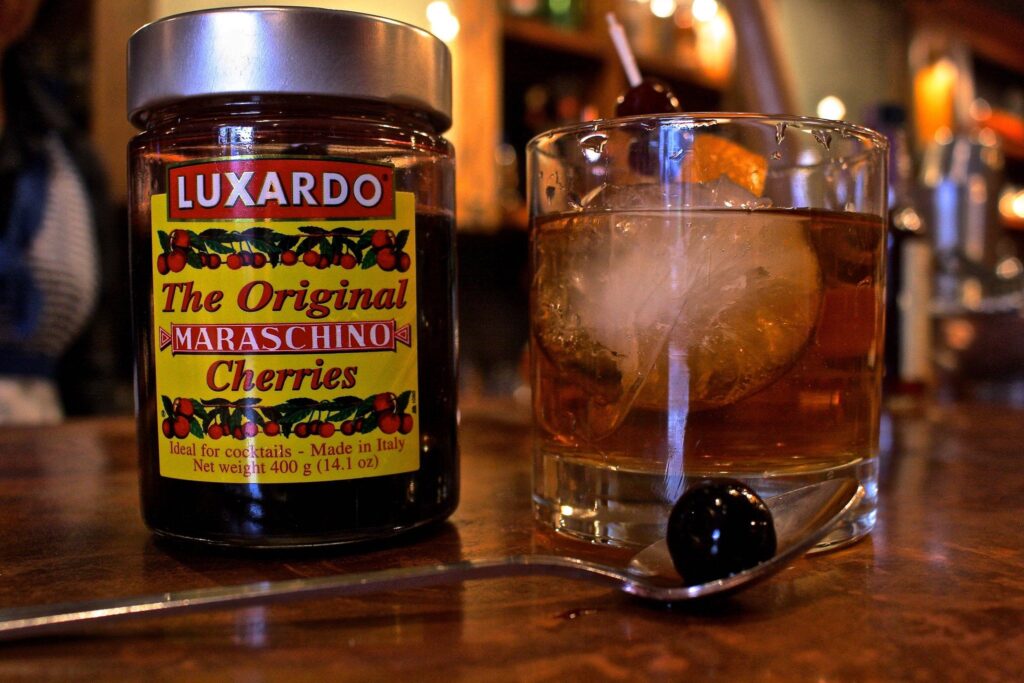
As an alternate, brandied cherries are also easy to make at home. There are hundreds of recipes on the internet to make them in your kitchen (just like the bartenders of old), and you can experiment with sweeteners, spirits, and spices to tailor them to your tastes, or what the drink is calling for. AND they can be made alcohol-free, although these will have a shorter shelf life.
One of my favorite lines from the movie Sideways is “To open a bottle of ’61 Cheval Blanc is enough reason to open a bottle of ’61 Cheval Blanc.” The quote transfers to cocktails nicely – making a cocktail with the best ingredients you can obtain, is reason enough to purchase them in the first place. Even the garnish.
Cheers!
Bill
AotCB-025
Instagram@architecture_of_the_cocktail
